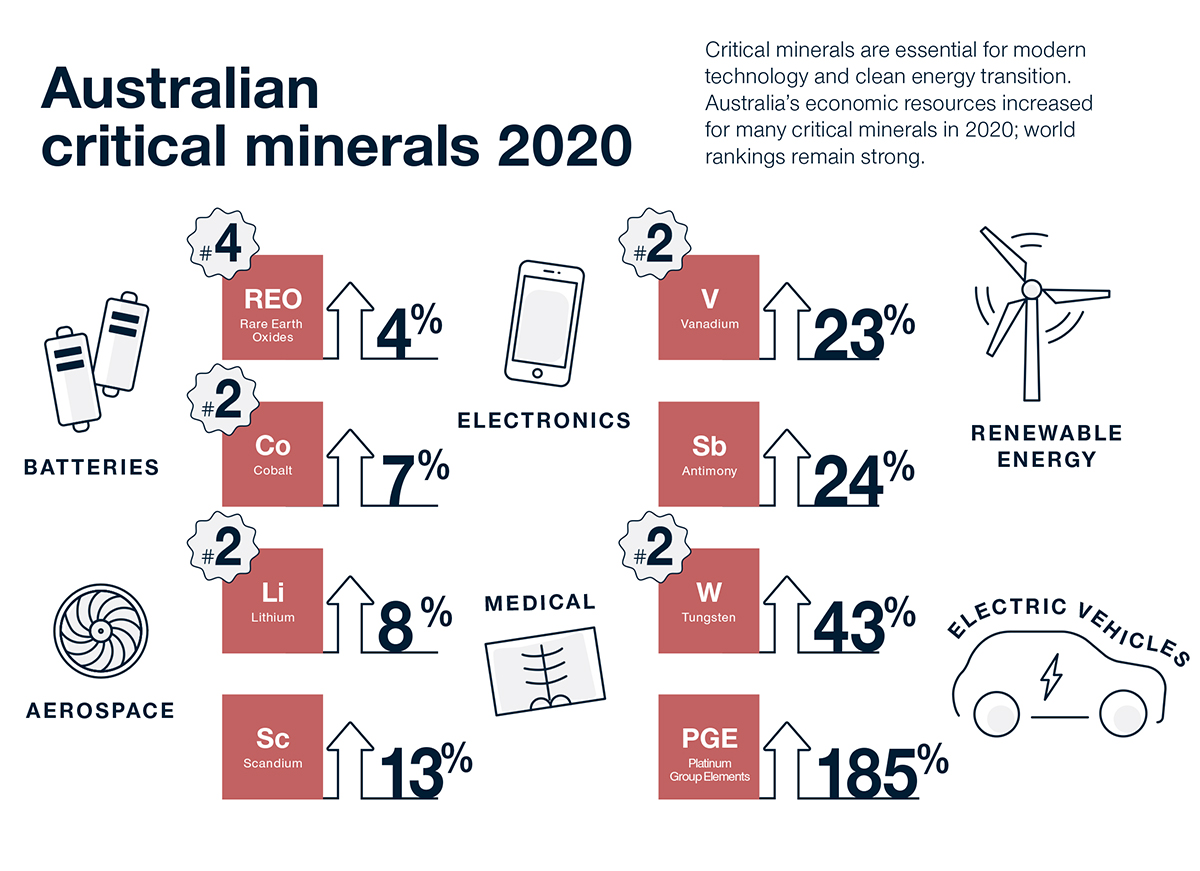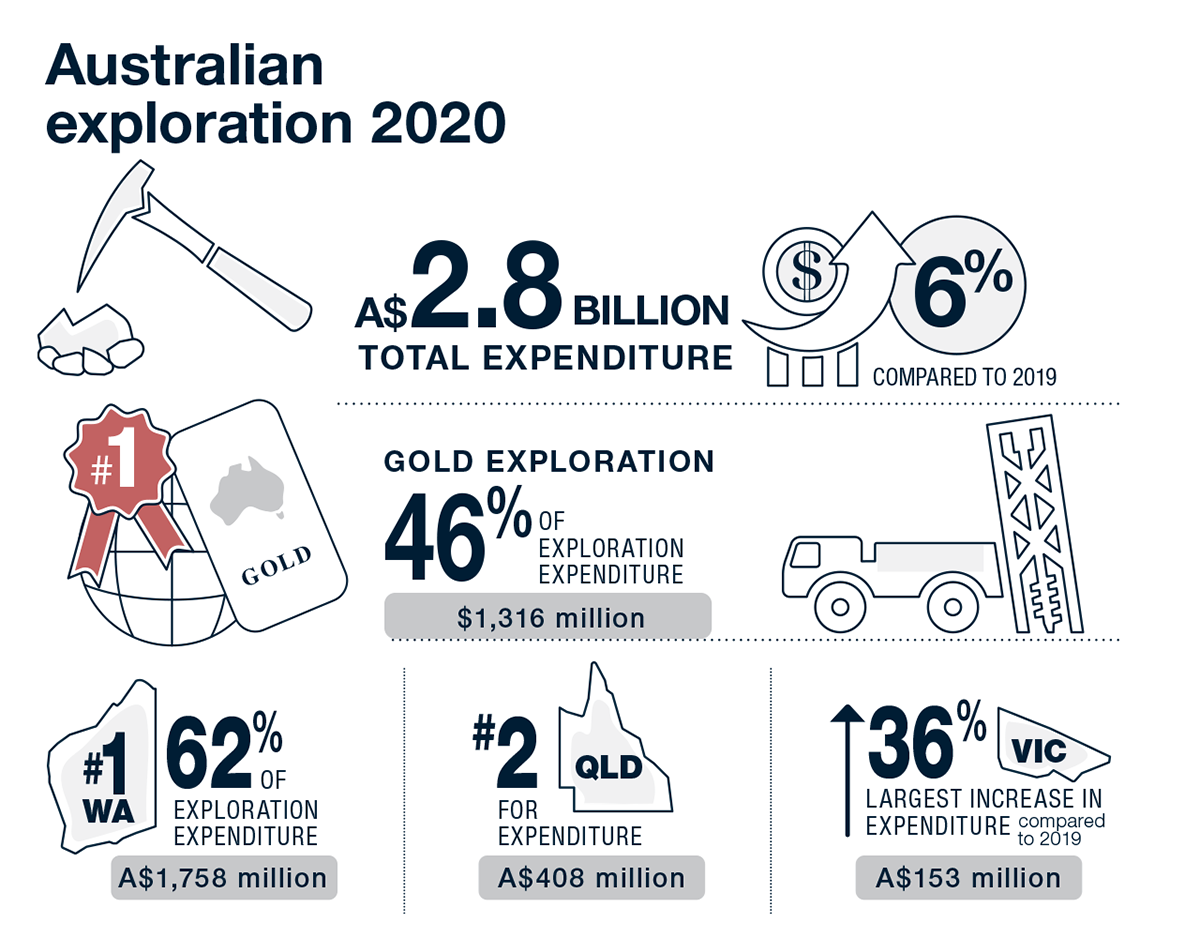News
Australia records boost in critical mineral resources
Published:14 April 2022
Australia records boost in critical mineral resources
Australia has seen significant increases in its inventories of critical mineral resources according to a report released by Geoscience Australia today.
Australia has seen significant increases in its inventories of critical mineral resources according to a report released by Geoscience Australia today.
The annual Australia’s Identified Mineral Resources (AIMR) report has tracked the nation’s known mineral resources using industry data since 1975.
It found in the year to December 2020, Australia’s economic inventories increased for rare earths (up 4%), lithium (up 8%), vanadium (up 23%) and platinum group elements, which increased an impressive 185%.
In the same reporting period, Australia:
- was the world’s leading producer of iron ore and bauxite, and the critical minerals rutile and lithium,
- provided 49% of the global supply of lithium, which is essential for battery storage technologies and the transition to electric vehicles, and
- was a top five producer of cobalt, ilmenite, manganese, rare earths and zircon: essential critical minerals for advanced technologies and the modern economy.
AIMR also reports that in 2020, mineral exports were valued at $231 billion and investment in mineral exploration reached $2.8 billion, an increase of 6% compared to the previous year. This is the highest spend on exploration since 2012.
Geoscience Australia’s Director of Mineral Resources Advice and Promotion, Allison Britt, said the increase in critical minerals was largely driven by additional exploration and rapidly rising global demand.
“We’re seeing demand for these minerals grow, particularly as the world transitions to low-emissions technologies,” Ms Britt said.
“The International Energy Agency forecasts nickel and lithium use in batteries will increase sixfold and thirteenfold, respectively, by 2040. There is an urgency to discover new world-class resources to meet this projected demand and further develop the pipeline of mineral resources that will anchor secure supply chains for Australia and our partners.”
Ms Britt said the report also shows a boost to Australia’s emerging potash industry. Potash is an essential fertiliser mineral used by the agriculture industry.
“Australia’s economic resources of potash increased 21% in 2020. While not included in this report, it is exciting to see the first commercial domestic production of potash in Australia achieved in late 2021. With this, Australia is on its way to reducing its reliance on imports and strengthening national food security,” Ms Britt said.
“The new potash industry, stimulated by Geoscience Australia’s salt lake study in 2013, clearly shows the benefits of government leadership in delivering precompetitive geoscience data and information through initiatives such as the $225 million Exploring for the Future program.”
The Geoscience Australia-led Exploring for the Future program is supporting industry to discover new mineral resources across the country. From 2016 to 2020, the program mapped more than 3 million square kilometres of northern Australia.
AIMR 2021 provides valuable insight for governments and industry to measure the impact of COVID-19 on our minerals industry and monitor the recovery.
The latest edition of AIMR is now available.
Contact:
Phone:
Email:






